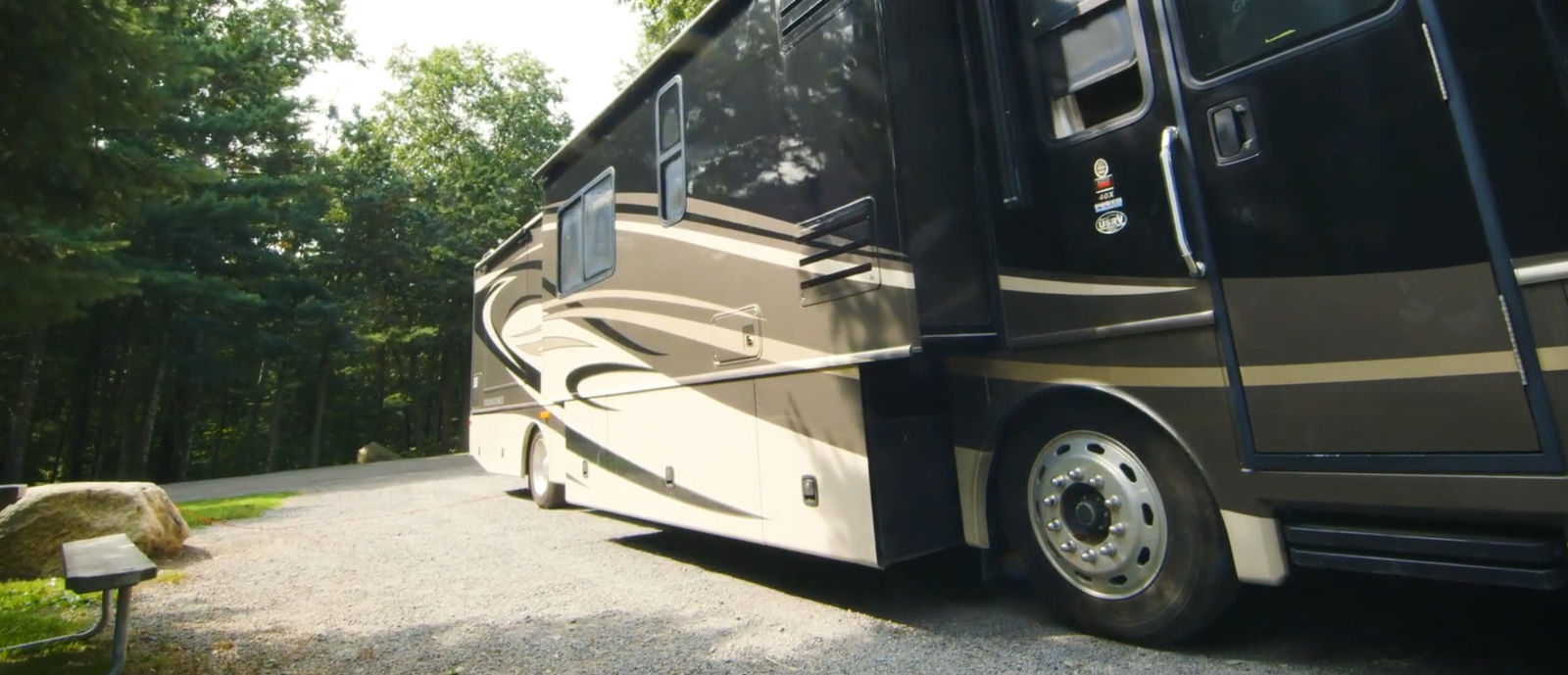
RV Newbie Toolkit: How to Set Up Your RV at the Campground
Whether this is your very first RV trip or just your first time setting up without help, this article is here to help you get started.
So, you’ve made it to the campground. Congratulations! Whether this is your very first RV trip or just your first time setting up without help, you’re probably asking, “Now what?”
In this episode of The RV Newbie Toolkit by Go RVing, Matt Light breaks down the essential first steps for setting up your RV once you arrive at your campsite.
Related: Setting up a travel trailer at the campground? Here’s a detailed guide with recommended gear from Go RVing!
Step 1: Leveling Your RV
First things first—your RV needs to be level. Why? Because a level RV is not only more comfortable to walk around in, but it's also essential for your appliances (especially your fridge!) to operate properly. An uneven setup can also cause stress on your rig's frame over time.
Here’s how to level your RV:
- Check your surface: Some campsites are sloped or uneven. Before you even back in, assess the ground. Is it gravel, dirt, or concrete? Each surface has its quirks, and this will help you prepare.
- Use a bubble level or leveling app: These can help you determine how much adjustment is needed from side to side or front to back.
- Deploy leveling blocks or pads under your tires or jacks if needed. These are especially useful for trailers without automatic leveling systems.
- For RVs with air ride systems: As Matt Light mentions in the video, be sure to dump your air before lowering your jacks. This ensures a stable and secure setup.
- Set your stabilizer jacks (if your RV has them). These jacks don’t level the rig but keep it from wobbling when you move around inside.
Pro tip: Always chock your wheels before doing anything else to prevent the RV from rolling.
Step 2: Opening the Slide-Outs Safely
Once your RV is level and stable, the next step is to open your slide-outs to give you all that precious interior living space. But don’t rush—there are a few safety checks you should always do first.
Do a walk-around inspection:
- Check for obstacles: Tree branches, picnic tables, grills, or electric hookups might be in the way of your slide-outs. Even if the site looks clear, take a few minutes to inspect all sides of your RV.
- Look up!: Slide-outs that open high may hit low-hanging branches or awnings.
- Involve the kids: As Matt recommends, bring your children into the process by having them help spot obstacles—it’s a great way to teach campground safety and involve the whole family.
Slide-out tips for beginners:
- Make sure your engine is running or the battery is charged enough to operate the slides.
- Never force a slide. If it resists, stop and check for blockages or uneven leveling.
- Keep the area clear during operation to prevent injury or damage.
What’s Next? Basic Hookups and Comfort Setup
While Matt focuses on leveling and slides in this episode, your setup isn’t complete until you’ve taken care of these basic hookups and comfort essentials:
Water, Sewer, and Electric Hookups:
For water connection help, check out our guide: Water 101: How to Hook Up at the Campground
- Sewer setup might not be glamorous, but it’s essential. If you're new to the process, we break it down step-by-step for you here.
- Don’t forget to test your power connection and monitor your amps so you don’t trip breakers. Here’s what you need to know about hooking up to electric at the campground.
Set Up the Outside
Now that your rig is level, stable, and hooked up, it’s time to make the site feel like home:
- Unroll your awning for shade and shelter. Be sure to stake it down if it’s windy!
- Lay out outdoor rugs or mats to reduce dirt being tracked inside.
- Set up camp chairs and tables for eating, relaxing, and socializing.
- Prep for pets if you’re traveling with furry companions—bring out a tether, pet fence, or portable crate.
Pro Tip: Use LED rope lights or lanterns for ambient lighting and better visibility around your site after dark.
Final Safety Checks
Before settling in, take a few moments to ensure everything is secure and safe:
- Lock your hitch if you're in a towable RV.
- Test all lights and appliances.
- Make sure stairs are stable and grab handles are extended.
- Double-check that fire extinguishers, smoke detectors, and propane detectors are operational.
Let the Fun Begin!
Setting up your RV at the campground can feel overwhelming at first, but once you’ve gone through the process a few times, it’ll become second nature. With a little patience and the right guidance, you’ll be able to set up quickly and start enjoying your RV vacation.
Looking for more expert advice for RV newbies? Check out our entire RV Newbie Toolkit playlist over on Go RVing’s YouTube channel!










